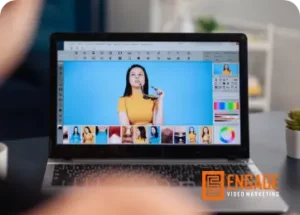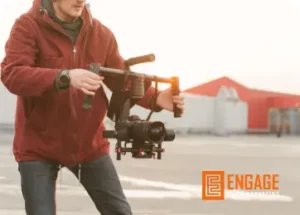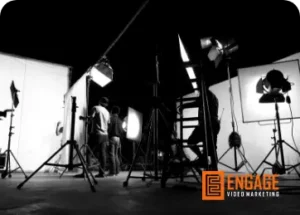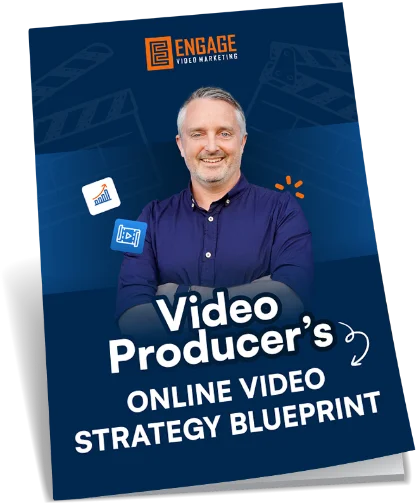When you’re thinking about repurposing video content specifically for native use on social media platforms, sometimes it can be very confusing as to which ratio you should be using. In other words, what size should the video be? You’ve got vertical video, square video, horizontal video. You’ve got all sorts of sizes of video in between that are possible to be done on different platforms these days, no longer is it one size fits all. In this article, I’m going to demystify the common video ratios that you’ll be considering as part of your social media video strategy in 2020 and beyond.
Now, the fact is that right now, most video platforms will actually accept a range of different ratios for the videos, everything from ultra-wide cinematic wide screen, up to vertical videos and all sorts of things in between. When we’re referring to these common screen sizes, I’m going to be talking about them as a ratio and also share with you the common pixel dimensions, which you’ll typically see across different platforms.
16:9 Ratio
16:9 is also commonly referred to as widescreen video. You’ll often find that as HD or high definition video. For that, we’ve got a pixel dimensions of 1920×1080. This is a common format, which you’ll often also find in 4k videos, typically 3840×2160 when it comes to pixels.
1:1 Ratio
The next common ratio that we’ll find is 1:1 or square video. Square video is typically 1080×1080, although any square resolution will actually work on most platforms.
4:5 Ratio
The next key ratio that you’ll see is 4:5. This is where we’re starting to get into vertical video format, but not full vertical video yet. Here at 4:5, we’re commonly working with a frame that’s 1080×1350 pixels.
9:16 Ratio
And finally, we talk about full vertical video, which is 9:16. Here the screen ratio is typically 1080×1920.
Now of course, these ratios can be used at different pixel resolutions, but on the screen here, you see the most common resolutions used at these different screen ratios. So, now the big question is when do you use each of these when it comes to creating video content for different video platforms?
YouTube
Let’s start with YouTube now for YouTube. I primarily focus on the widescreen aspect ratios from 4k down to high definition. So you’re going to be considering a 4k resolution at 3840×2160 or more commonly high definition at 1920x 1080. Although YouTube does allow other aspect ratios, what I’m focusing on here is the core ratio that you’ll probably want to be considering.
Now let’s move on to Facebook video and first let’s talk about the Facebook feed. Recognising that most people are using the Facebook feed using their mobile devices, we want to maximise the amount of screen real estate that we can command with our videos on the mobile devices. I most commonly recommend using 1:1 or square aspect ratio videos, or 4:5 vertical videos. You want to steer away from using full vertical, which is that 9:16, because it’ll often be truncated or cut off in many newsfeeds when it comes to creating video creative for Facebook or Instagram ads. This is where I definitely be recommending a 4:5 aspect ratio, or there is another aspect ratio, which is 2:3, but 4:5 is really the sweet spot for ad creative.
When we’re talking Instagram, there’s really two different video platforms that need to be considered differently. First of all, there’s the Instagram feed and then there’s Instagram stories. You can think about the same approach here for whether it be Snapchat stories or Facebook stories as well.
Let’s talk first about the feed. Similarly to Facebook, you’re going to focus on 1:1 video or 4:5 video. If it’s destined for the feed, remembering that it needs to be under 60 seconds in order for it to play within the feed. When you get to Instagram TV, you can go up to 10 minutes, but here you’re going to be wanting to create vertical video, which is optimised for a 4:5 frames. So what I mean by that is you’re going to, for Instagram TV, create a vertical video in full 9:16, but pay attention to that critical centre section, which is about that 4:5 aspect ratio. Because when the Instagram TV video is played within the feed, you’re going to get the top and the bottom cut off, and it’s going to show the 4:5 sections. So make sure that nothing critical is in that section of the video.
Now let’s talk about Stories. This is where it needs to be created with full vertical video in mind. We’re talking here about the 9:16 aspect ratio. Create your video with that aspect ratio in mind and capitalise on the full vertical experience that you can provide for your viewers.
Okay, now let’s move over to LinkedIn. LinkedIn as a video platform, again is primarily used within a mobile feed. With that in mind, similar to Facebook, you’re going to focus on 1:1. You do often see much more 16:9, a widescreen video on LinkedIn as well. But I recommend using 1:1 video within the LinkedIn feed because it looks beautiful on both handheld devices and in the desktop experience as well.
So, they’re the key video platforms that I want you to consider, which aspect ratio is going to work for you.
I want to share five quick tips on how to think about repurposing video content natively for these different platforms in these different aspect ratios.
Tip #1 – Shoot with the end in mind.
Ideally film your content in a 4k aspect ratio, and think about a wider angle of view so that you can actually fit more within the frame and allows you to crop in to the video without losing important elements of your shot.
Tip #2 – Resize your video to fill the entire aspect ratio frame where possible
This is so that you don’t end up with bars on the top or the bottom or the sides. When you can’t scale your video all the way to fit the entire frame, then you need to consider what you’re going to do with the empty space within the top and the bottom or the left and the right of the frame. This is where I recommend using some kind of branding, which is using your brand colour or adding in a headline or using some text elements to actually support the content of the video.
Tip #3 – Consider the sound-off viewer
On many of the platforms that I’ve mentioned here, you want to be considering adding burnt in captions, using a tool like Quicc.io by adding burnt in captions to your videos. You’re going to be natively creating these videos for maximum engagement on these sound off viewing platforms.
Tip #4 – Develop a workflow for repurposing your video content to maximise the approach you take.
Typically it’s going to make sense to create the wider format video first. So if you’re going to create a 16:9 or widescreen version of your video, then start with that one, get that edit complete and take your widescreen video, and then resize those elements to suit the intended frame size.
Tip #5 – When repurposing videos for different platforms, make sure that you change or remove any platform specific calls to action.
For example, in your YouTube video, you mentioned things like subscribe or hit the bell icon. Then you want to make sure that you actually remove those elements when you’re repurposing for Facebook or Instagram. Similarly, if you’re repurposing for Instagram stories, then maybe you want to record an extra section where you say things like swipe up to get to the link. When you’re being strategic about repurposing videos natively across different aspect ratios, you can be much more effective at creating video content that engages your ideal audience and drives them to take the action.
So I hope you found that useful, and I’d love to hear from you in the comments below. Let me know how you’re currently repurposing your videos across different platforms as well.



